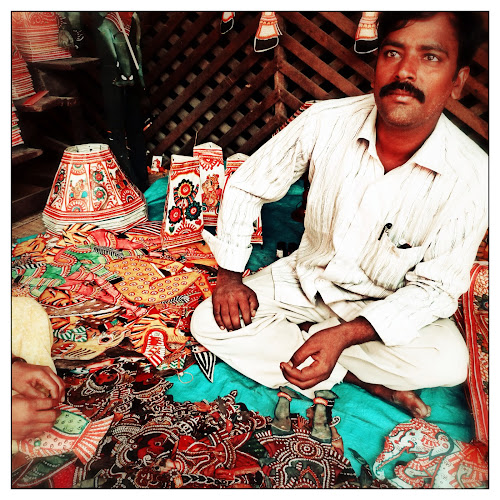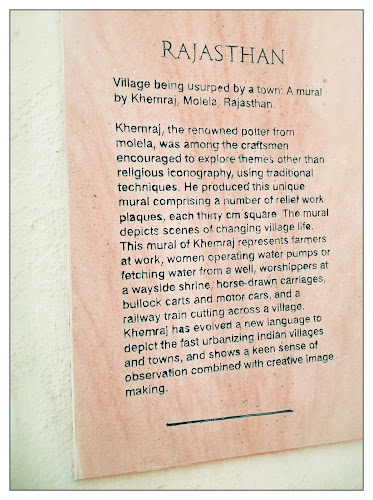These often jointed puppets are made using colored inks on perforated goat skin leather. They are beautifully detailed and colored, and when light shines through the holes (there are many--if you look closely at these pictures, every dot and circle is a hole), they look like jewels. They are used as shadow puppets, and because of the translucent nature of the goat skin leather the colors end up showing. The elephant on the top of this blog page is also one of these 'puppets'--though it doesn't have jointed parts.
In the spirit of using the goat hide, it would be good to use an upcycled or recycled material to make our own puppets. Ironing together plastic bags (instructions below*) creates a great translucent surface that could easily be cut with scissors, punctured using a needle, or a hole punch, and colored sharpies could be used to decorate these. Recycled cardboard boxes (cereal boxes or cracker boxes, etc) could be used, if translucency is not desired. Alternatively white paper could be glued to something like rice bags or lightweight cloth bags ahead of time (using watered down white or pvc glue) to create a durable and flexible material that would retain some translucency. Joints are attached to the main body with knots of thread, but 'brads' or brass fasteners could be used as well.
Encouraging children to think about what moves, what bends, and what doesn't bend can be a great way to begin this project. Have a child put left hand on right wrist and feel the joint as it moves up and down, next put left hand on right elbow and feel that joint as it moves, then shoulder, etc. show children how to draw separate parts so they fit on one sheet of 'paper' so there isn't too much waste. Color, then cut and assemble.
Children could choose different characters from a familiar story or play as a prompt--in which case it should be considered which movements would be crucial to the story (ie if someone's main action is chopping wood he might not need legs that bend). They could also work on their own individual animals, after some lively discussions about animal actions and unique features.
Detail, showing perforation
A lamp shade, made using the same materials and techniques
Puppet show, in action
*to iron plastic bags, trim off handles and bottom of bags, layer four bags together, smoothed out, between two larger pieces of paper, iron (on medium) continuously, no stopping, until bags are fused together. Do this outside or in a well ventilated area as there will be fumes.





















